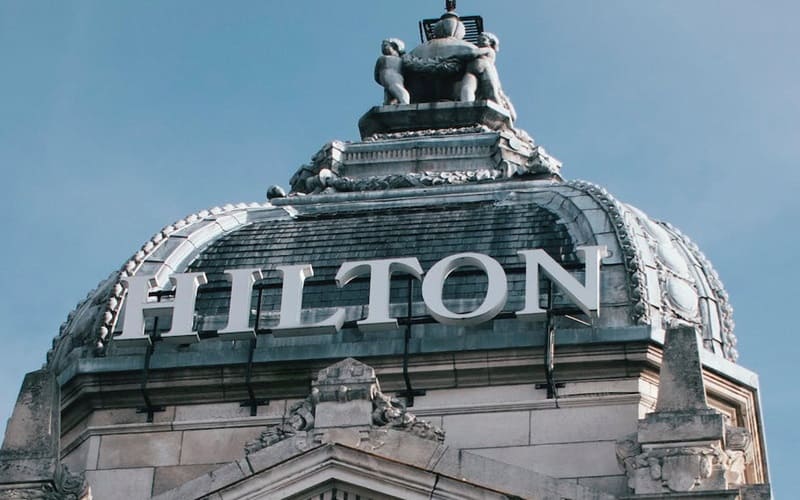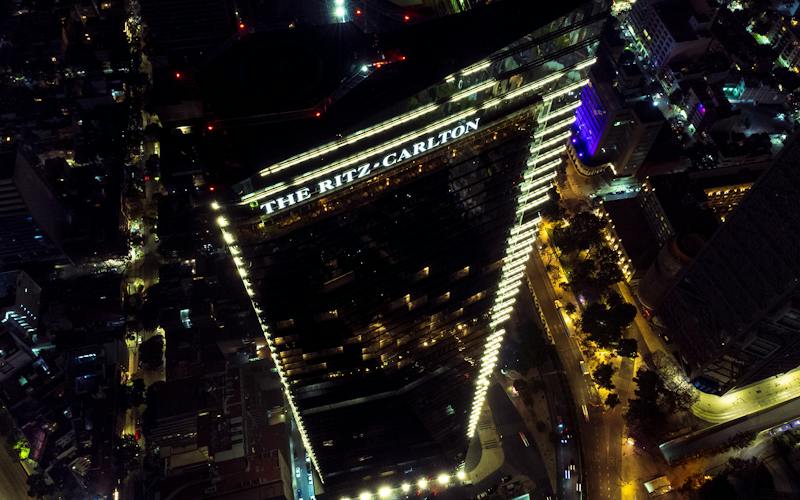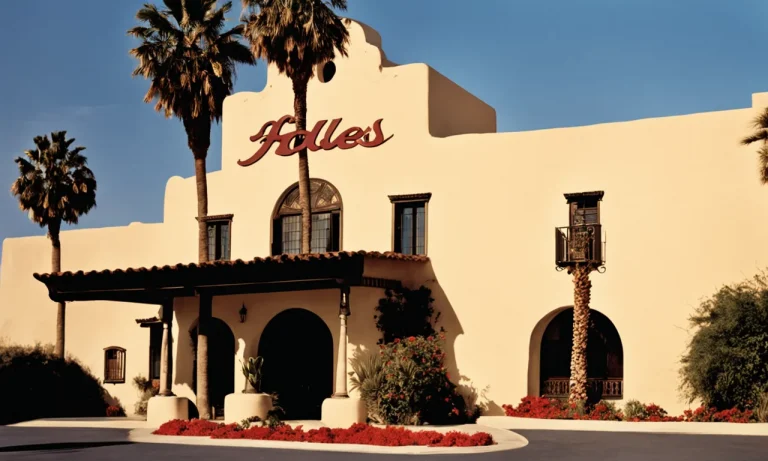Are you wondering if Hilton and Marriott are actually the same company? With so many hotel brands under each corporation’s umbrella, it can get confusing.
If you’re short on time, here’s the quick answer: No, Hilton and Marriott are completely separate companies with no shared ownership. While they are both large players in the hospitality industry, Hilton and Marriott have distinctly different corporate histories and operate as independent entities.
In this comprehensive guide, we’ll provide a detailed look at the ownership and corporate structures of Hilton and Marriott to clear up any misconceptions.
The History and Ownership of Hilton
When it comes to the hospitality industry, few names are as iconic as Hilton. With a history spanning almost a century, Hilton has become synonymous with luxury and world-class service. Let’s take a closer look at the fascinating history and ownership of this renowned hotel chain.

Hilton’s Founding and Early Years
Hilton was founded by Conrad Hilton in 1919. Starting with a modest hotel in Cisco, Texas, Conrad Hilton had a vision to create a hotel brand that would offer exceptional hospitality and comfort to its guests.
His dedication to customer service and attention to detail quickly gained recognition, and Hilton hotels soon became the preferred choice for travelers.
Over the years, Hilton expanded its presence across the United States, with landmark properties such as the Hilton Chicago and the Roosevelt Hilton in New York City. These hotels not only offered luxurious accommodations but also became social hubs where celebrities, politicians, and business leaders would gather.
Hilton’s Mergers, Acquisitions, and Spinoffs Over the Years
Hilton’s growth continued through strategic mergers, acquisitions, and spinoffs.
In 1964, the company was listed on the New York Stock Exchange, marking a significant milestone in its history. In the following decades, Hilton made several notable acquisitions, including the purchase of the Waldorf Astoria in 1972 and the acquisition of Bally Entertainment in 1996.
One of the most significant events in Hilton’s history was the merger with the Promus Hotel Corporation in 1999. This merger brought together the Hilton brand with other well-known hotel chains such as DoubleTree, Embassy Suites, and Hampton Inn, expanding Hilton’s portfolio and global reach.
In 2006, Hilton Hotels Corporation was acquired by Blackstone Group, a leading investment firm. This acquisition led to the creation of Hilton Worldwide Holdings Inc., which became the parent company for a diverse portfolio of hotel brands, including Hilton Hotels & Resorts, Waldorf Astoria Hotels & Resorts, and Conrad Hotels & Resorts.
Current Corporate Structure and Brands Owned by Hilton
Today, Hilton is a global hospitality company with a presence in over 100 countries and territories. The company operates under three distinct divisions: Hilton Hotels & Resorts, which caters to the luxury segment; Hilton Garden Inn and Hampton by Hilton, which focus on the mid-priced market; and Home2 Suites by Hilton and Tru by Hilton, which cater to the extended stay and budget-conscious travelers.
In addition to its own brands, Hilton also manages and franchises several other hotel brands, including Curio Collection by Hilton, Tapestry Collection by Hilton, and Canopy by Hilton. These brands allow Hilton to cater to a diverse range of guests, from business travelers to families and vacationers.
It’s important to note that Hilton is not owned by Marriott. While both hotel chains are industry leaders, they operate as separate entities with their own distinct ownership and management structures. To learn more about Hilton and its extensive portfolio of hotels, you can visit their official website.

The History and Ownership of Marriott
Marriott’s Founding and Expansion
The Marriott hospitality company has a long and storied history. It was founded in 1927 by J. Willard Marriott and his wife Alice when they opened a root beer stand in Washington D.C. This small business expanded into a chain of restaurants and hotels.
By 1957, Marriott had opened its first motel in Arlington, Virginia. Over the next decades, Marriott aggressively expanded by acquiring other lodging chains like Residence Inn, Courtyard by Marriott, and Ritz-Carlton.
This strategy of growth through mergers and acquisitions allowed Marriott to become one of the largest hotel companies in the world.
Marriott’s Mergers and Acquisitions
Some key mergers and acquisitions were pivotal in Marriott’s growth. In 1967, Marriott acquired Comedor Hotels and Ramada Inns, significantly increasing its presence. In 1995, Marriott merged with food services company Sodexo, later spinning it off in 2001.
One massive deal was Marriott’s $13 billion acquisition of Starwood Hotels & Resorts in 2016, bringing Sheraton, Westin, and W Hotels into the Marriott brand portfolio. Through all of these mergers and acquisitions over its history, Marriott has strategically chosen brands that complement its offerings and provide economies of scale.
Current Marriott Brands and Corporate Structure
Today, Marriott International encompasses over 7,000 properties across 30 leading hotel brands. Some of their most prominent global brands include Marriott Hotels, Sheraton, Westin, W Hotels, Courtyard, Residence Inn, Renaissance, and Ritz-Carlton. Marriott operates in over 130 countries.
Its headquarters are located in Bethesda, Maryland and it employs over 120,000 people worldwide. Marriott International is a publicly traded company on the NASDAQ exchange, with the founding Marriott family continuing to own approximately 14% of company shares.
Through its long history of expansion, Marriott has emerged as one of the most important multinational hospitality businesses.

Hilton and Marriott: Completely Separate Companies
Contrary to popular belief, Hilton and Marriott are not owned by the same company. They are completely separate entities in the hospitality industry, each with their own unique ownership structures, business models, and corporate cultures.
No Shared Ownership Between the Hotel Giants
Hilton Worldwide Holdings Inc., commonly known as Hilton, is a multinational hospitality company that operates and franchises a wide range of hotels and resorts across the globe. On the other hand, Marriott International Inc. is another major player in the hotel industry, renowned for its extensive portfolio of hotel brands.
While both Hilton and Marriott have a significant presence in the market, they have distinct ownership structures.
Hilton is a publicly traded company, with its stock being traded on the New York Stock Exchange under the ticker symbol “HLT.” Marriott, on the other hand, is also publicly traded and can be found on the NASDAQ stock exchange under the ticker symbol “MAR.”
Differing Business Models and Corporate Cultures
Although Hilton and Marriott both operate hotels, their business models and corporate cultures differ significantly.
Hilton focuses on offering a diverse range of hotel brands to cater to different types of travelers, from luxury accommodations to budget-friendly options. Some of Hilton’s well-known brands include Hilton Hotels & Resorts, Conrad Hotels & Resorts, and Hampton by Hilton.
Marriott, on the other hand, has a similar approach but with its own distinct brands. It operates luxury brands such as The Ritz-Carlton and JW Marriott, as well as more budget-friendly options like Courtyard by Marriott and Fairfield Inn & Suites.
These differences in business models and corporate cultures reflect the unique strategies and target markets of each company. Hilton and Marriott have their own individual brand identities and customer bases, allowing them to thrive independently in the highly competitive hospitality industry.
Competitors in the Hospitality Industry
While Hilton and Marriott may not share ownership, they are undoubtedly fierce competitors in the hospitality industry. Both companies strive to attract guests and maintain high standards of service and quality across their respective hotel brands.
As two of the largest hotel chains in the world, Hilton and Marriott constantly compete for market share, seeking to expand their global footprints and capture the attention of travelers. Their competition drives innovation and pushes both companies to continually improve their offerings, benefiting consumers with more choices and enhanced experiences.

Conclusion
While Hilton and Marriott may compete for customers in the hotel and hospitality space, they have always operated as completely independent businesses with no crossover in ownership or corporate ties.
Through various mergers, acquisitions, and spinoffs over the decades, Hilton and Marriott have built up their own distinct portfolios of hotel brands and loyal customer bases.
The next time you’re choosing between a Hilton or Marriott property for your stay, you can rest assured knowing your dollars aren’t going to the same parent company!






